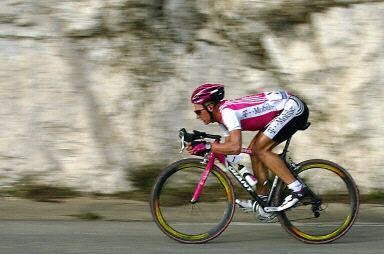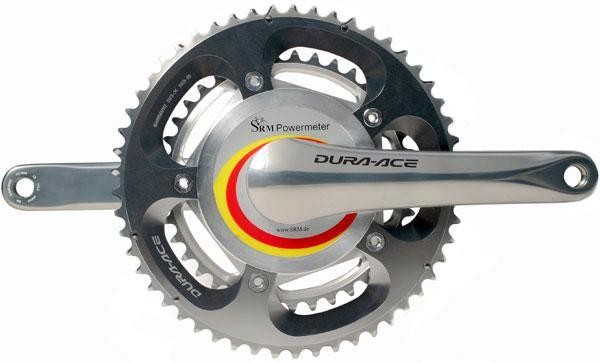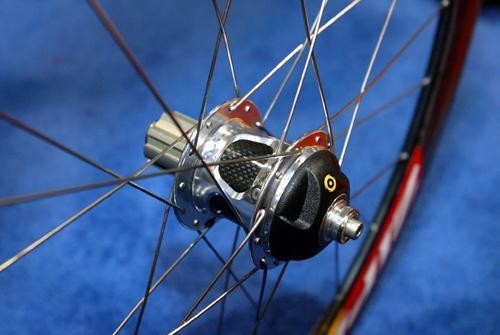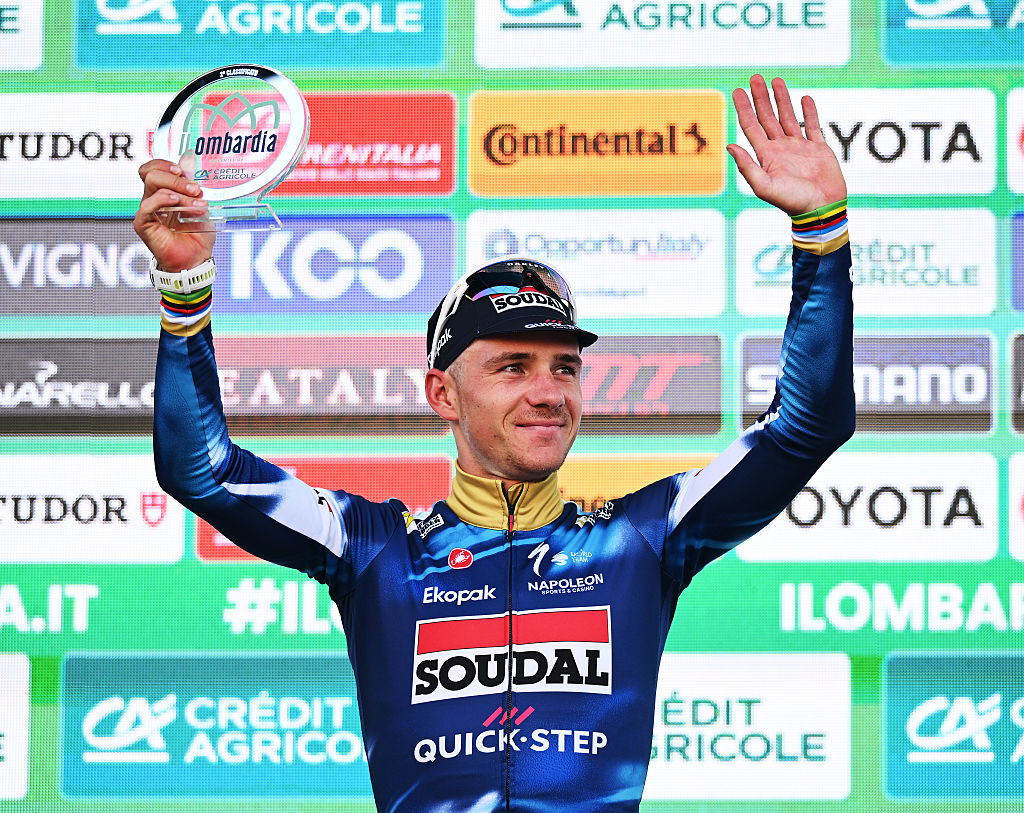Power up!
In the first of a series on power-based training, former Saturn pro Kristy Scrymgeour examines the...



Fitness features, November 28, 2004
In the first of a series on power-based training, former Saturn pro Kristy Scrymgeour examines the benefits of this increasingly popular way of monitoring your fitness and training progress.
I remember the first time I used a power meter in a real race. It was a fairly important time trial that preceded a very important one the following week. I wanted to analyse this one to see if there were things I could improve on for the big race. I had always used heart rate monitors to pace myself in training and in previous races and aimed to keep my heart rate at my threshold consistently for the whole race.
During this particular race I did the same. It was to be about a 30-minute race and I aimed to get my heart rate up to 185 and keep it there for the whole time. This I did. As far as speed went, I knew I had a fast start, felt a bit flat in the middle and came back a bit towards the end but all in all I felt it was an okay ride. In analyzing the power data later however, I realized that my ride was not very good at all and I might as well have spent a third of it sitting on the beach twiddling my thumbs for all the good it did. The power meter showed that I had gone out way too hard. My first ten minutes were at least 20 Watts over my target average power , the middle ten minutes I had fallen in a heap and dropped to 20 Watts under my average and then come back to finish of just under my ideal average for the last 10 minutes. The way my power meter read mirrored how I had felt.
That inspired me to work on my pacing, and my subsequent time trials were much better, with much more consistent power output throughout the race and a dramatic improvement in my times. For me this was the defining moment where I learnt the value of using power meters for training and for analyzing and learning from your racing. This is only one advantage of using a power meter as a tool.
The AIS word
Dave Martin is the head physiologist at the Australian Institute of sport and has been using power meters to test athletes and analyse their training and racing data for the last 10 years. He has built up an extensive library of data and uses it along with the Australian coaches to plan training programs of athletes. When Cyclingnews caught up with Martin recently, he was more than happy to talk for hours about the advantages of using power meters in training. The multiple uses for using these meters, Martin explained, include "training quantification immediate feedback - i.e. using them out on the road to pace our intervals etc.; trend analysis; competition analysis - looking at the demands of competition so that you can start to get your training to be a bit more specific to those demands in the immediate lead up to the competition; and finding out your strengths and weaknesses. These are but a few."
The latest race content, interviews, features, reviews and expert buying guides, direct to your inbox!
With all the uses power meters can be put to and despite his enthusiasm on the subject, Martin does realize that the power meters to not perform magic. "An SRM doesn't make you faster," he laughs. "In fact if you put one on your bike it probably makes you slower. It is not the tool that makes you great. It's your ability to hone in on the information for your needs and troubleshoot. It probably won't make you any better than you are anyway, it will probably just get you there a little quicker and it enhances the odds that you'll be on form when you need to be."
"When you're trying to get your peak just right for that one big race, just like Lance is for the Tour de France for example," adds Martin, "then it becomes a much more interesting trick and that's where it becomes helpful.
The other beauty of "the toy" - as Martin puts it - is the motivational value. "Instead of saying 'lets just go up a hill and see how I go'," he says, "You've actually got a target or a goal. Much like a swimmer doing laps. You know you can do 100 meters in a minute, so now you try to do it in 56 seconds. With cycling on the road or mountain biking there are so many different variables. There are so many things that influence speed. Power meters get around this complication and allow you to measure your power output for intervals giving you a very clear picture."
The advantage of using power over using your heart rate to gauge performance as I discovered in that time trial, is that heart rate is influenced by many variables. It takes a while to get your heart rate to the level you want and many things can influence it. Heat, altitude, hydration, fatigue and illness all have an effect on your heart rate making it an inaccurate metric when used alone. However, a heart rate monitor can be used as an indicator for fatigue and illness and is the perfect tool to use in conjunction with a power meter.
In more detail Martin talks about how he has used power meters specifically with the athletes and coaches at the AIS. "It is helpful in leaning about environmental strain. We use it to understand the impact of altitude, stage racing and single day racing and we have done a lot of work with heat [especially leading up to the Commonwealth Games in Malaysia in 1998] and figuring out how heat affects you during time trials and road races. We use them to profile courses, which gives us an understanding of the nuances of the course because every course is different. Then we can use that information to set specific training sessions."
When I was training with the women's team at the AIS, Dave had analyzed files from the recent world cups and realized that the biggest efforts in a road race were in fact not long efforts at all but a multitude of very short sprint-type efforts where the rider might be moving up in the bunch or chasing attacks. Unless the rider was part of a long break away the maximal efforts were all sprints. The result of this discovery was that our program then consisted of deadly repetitive sprint sessions. But we improved and the same techniques help the current AIS women's team win World Cups and Olympic gold medals.
Heiko Salzwedal, who coached the Australian men's road team for many years before moving on to the British track team among other things, says the power meter has made a dramatic impact visible in the progression of world records in time trial events, many of which we saw broken at the recent Olympic games. "You can exactly calculate how many Watts you must produce to reach a certain time," he said. "Say in the 4000m team pursuit, you can set the training goals accordingly."
Another advantage is for the remote coach. "I'm still not a big fan of long distance coaching," said Martin, "but a power meter gives you a very clear picture of what the athlete did in training and in a race." Gone are the days when an athlete wins a race and the coach automatically assumes the rider is improving. "You can download the file and realize that it was a pretty piss arse weak World Cup and even the sprint wasn't fast," said Martin. "You can see that the rider must have had a pretty good lead out or the crash in the last 500m knocked out all the competitors. So let's not get overly excited about that one, although we'll take the win!"
Power-measuring options
The benefits of having a power meter as a training tool are numerous. Now the only question is which one to use. The daddy of consumer-level power meters (that is, ones an ordinary rider can buy as opposed to custom-built 'black box') is the SRM (Schoberer Rad Messtechnik) after the original engineer Uli Schoberer and his team of engineers. The development of the SRM began in 1986 and the resulting meter measures power at the cranks.
The next power meter to appear was Gerhard Pawelka's PowerTap, which built the instrument into the rear hub. SRM and PowerTap are probably the two best-known power meters, but they have recently been joined by an device from Polar (best known for its heart rate monitors) which measures power by sensing chain tension and Ergomo, uses two optical sensor "combs" in the bottom bracket.
With the power measured in different places in each device, they different qualities and advantages. With SRM, Polar and Ergomo you can still, for example, measure power after you've had a wheel change in a race and you swap wheels for different events. On the other hand, PowerTap is easy to swap between bikes, for different events if you have, say, a road bike and a time trial bike.
Recently both SRM and PowerTap have introduced new, lighter versions of their meters to combat the idea that power meters should be used for training only because they are too heavy for racing. SRM has built a meter into a Shimano Dura-Ace crank, saving 150g over the SRM Pro model and making for a crank that's only 70 grams heavier than the normal 10 speed Dura-Ace. PowerTap make CycleOps has introduced a new hub with a carbon shell, reducing the weight by 160g - it's now only 16g heavier than a typical racing wheel rear hub.
These latest developments will no doubt encourage riders to use their power meters more and more in racing giving themselves and their coaches a plethora of data to analyse and learn from.
Click here for Part II of our Power-based training feature, where several coaches weigh in with their views of using power as a basis for training.
Further reading: Power zone training - Cyclingnews fitness panelist Ric Stern explains how to get the most out of your power meter.
More fitness features

